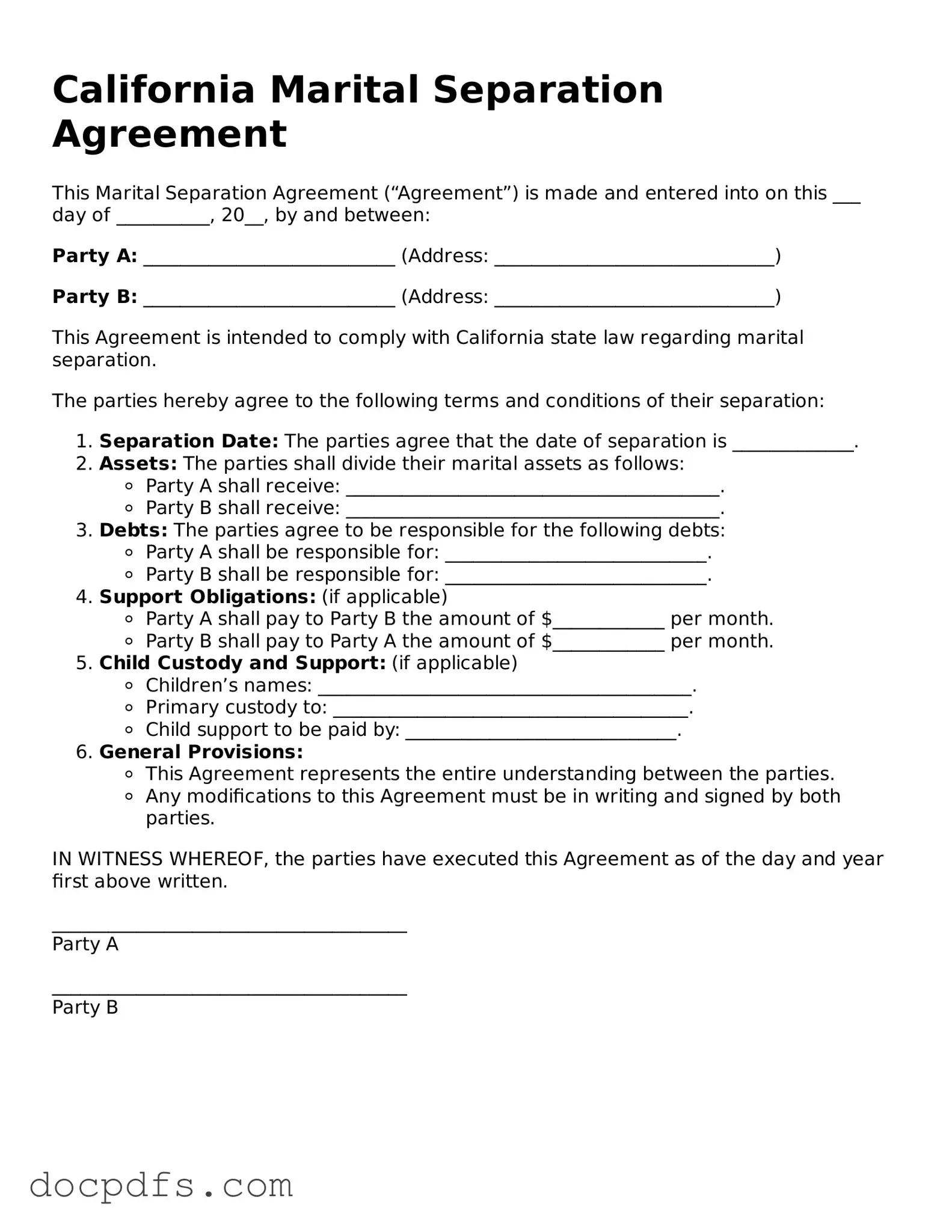What is a California Marital Separation Agreement?
A California Marital Separation Agreement is a legal document that outlines the terms of separation between spouses. It covers various aspects such as property division, child custody, and support obligations. This agreement helps both parties understand their rights and responsibilities during the separation period.
Do I need a lawyer to create a Marital Separation Agreement?
While it is not required to have a lawyer, it is highly recommended. A lawyer can help ensure that the agreement is fair and legally sound. They can also assist in negotiating terms that work for both parties. If both spouses agree on the terms, they may choose to draft the agreement together or with the help of a mediator.
What should be included in the agreement?
When creating a Marital Separation Agreement, consider including the following:
-
Division of property and debts
-
Child custody and visitation arrangements
-
Child support and spousal support obligations
-
Health insurance coverage
-
Any other relevant agreements
Each situation is unique, so tailor the agreement to fit your specific needs.
How does the Marital Separation Agreement affect divorce proceedings?
The Marital Separation Agreement can play a significant role in divorce proceedings. If both parties agree on the terms, it can simplify the divorce process. The court may incorporate the agreement into the final divorce decree, making it legally binding. However, if there are disputes, the court may need to intervene to resolve them.
Can the Marital Separation Agreement be modified later?
Yes, the Marital Separation Agreement can be modified if both parties agree to the changes. It is essential to document any modifications in writing and have both parties sign the updated agreement. This helps ensure that the new terms are clear and enforceable.
What happens if one spouse does not follow the agreement?
If one spouse fails to adhere to the terms of the Marital Separation Agreement, the other spouse can seek legal remedies. This may involve going back to court to enforce the agreement. The court can order compliance or impose penalties for non-compliance, depending on the situation.
